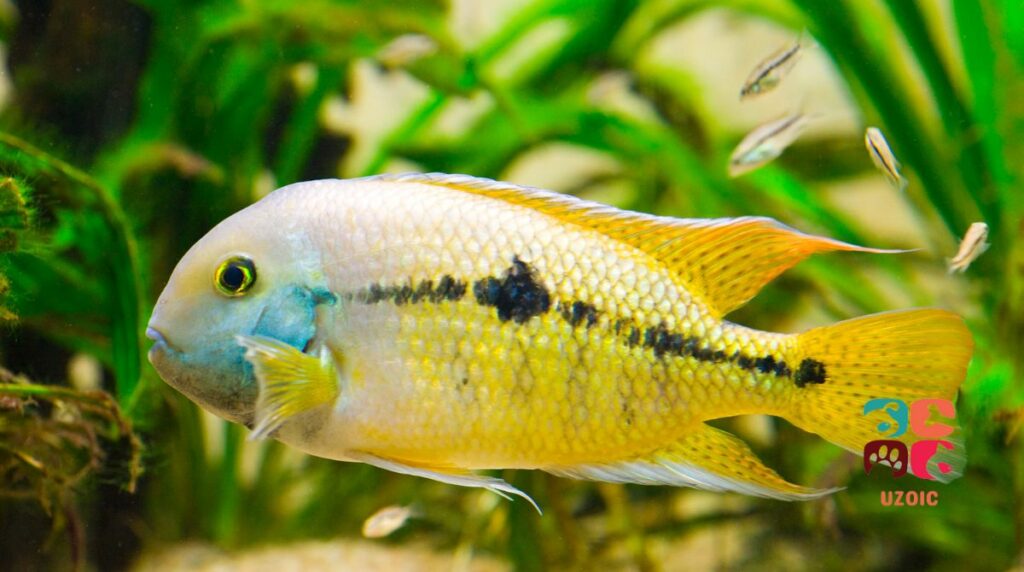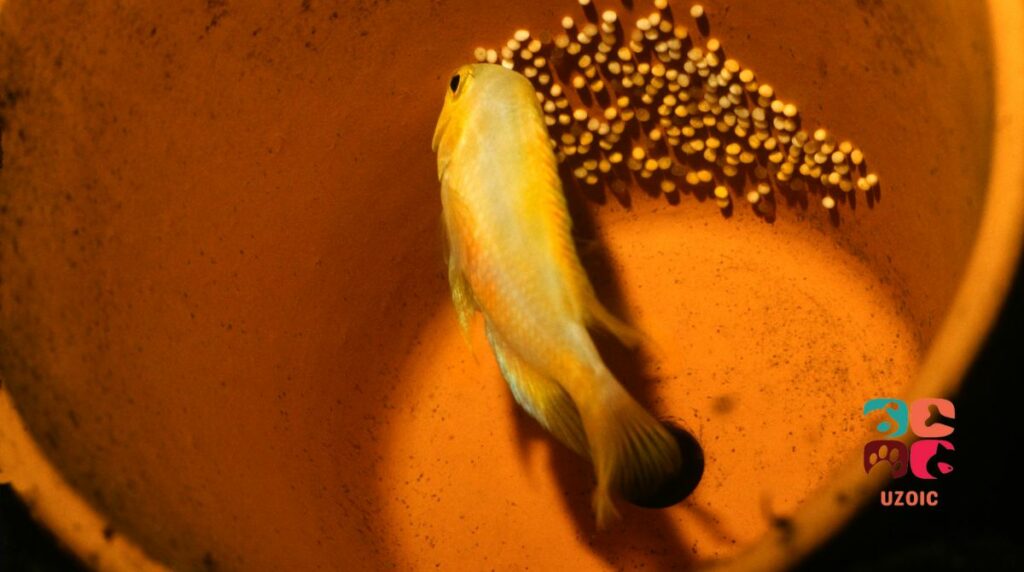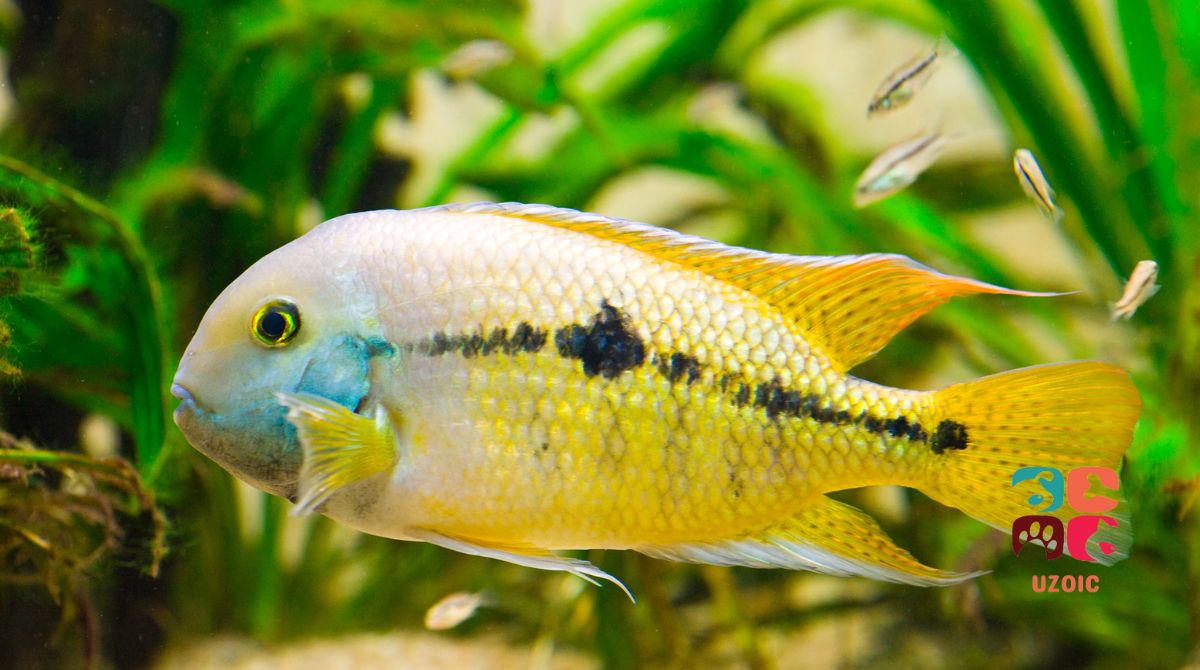If you’re a Cichlid breeder, then you know that one of the biggest concerns is when your Cichlid eggs start to turn white. This can be a sign that the eggs are not fertile, and it’s important to take steps to correct the issue before it’s too late. This blog post will discuss why Cichlid eggs turn white and how you can prevent it from happening!
Table of Contents
The Different Types Of Cichlids And The Different Ways They Lay Their Eggs
Cichlids are a large and diverse family of fish that come in many shapes, sizes, and colors. They are native to freshwater environments in Africa, Central America, and South America. Cichlids are known for their bright colors and aggressive behavior. There are over 2000 species of Cichlids, and they can be divided into two main groups: African Cichlids and New World Cichlids.
African Cichlids are the largest group of Cichlids, and they are found in freshwater environments throughout Africa. They are known for their bright colors and aggressive behavior. The most common type of African Cichlid is the Mbuna, which is a small Cichlid that is brightly colored. Mbunas are found in Lake Malawi, where they live among the rocks and feed on algae.
New World Cichlids are found in freshwater environments in Central and South America. They are less aggressive than African Cichlids, and they come in a variety of colors. The most common type of New World Cichlid is the Oscar, a brightly colored fish that can grow over a foot long. Oscars are found in rivers and streams in South America, where they feed on smaller fish.
Cichlids lay their eggs in different ways, depending on the species. Some Cichlids lay their eggs in nests they build, while others scatter them among the plants in their tanks. Cichlids are very protective of their eggs and guard them until they hatch.
Breeding Activity: You will notice a behavior change when your Cichlids are ready to breed. The males will become more aggressive and will start to chase the females. Finally, you will see the male and female cichlids going around in circles, and that is when you know that the Cichlids will complete the breeding activity.
Spawning: Spawning is the process of laying and fertilizing the Cichlid eggs. The female Cichlid will lay her eggs in a nest or among the plants in the tank. The male Cichlid will then fertilize the eggs by spraying the sperm over them. Once the eggs are fertilized, the female will take all the eggs in her mouth and will carry them to a safe place. The female Cichlids will have a bulge in their mouth, where they carry the eggs.
Ways To Tell If Your Cichlid Eggs Are Fertile

Cichlid eggs can be tricky to incubate, but there are a few things you can do to increase your chances of success. One of the most important things you can do is to choose a healthy pair of Cichlids to breed. Cichlids that are well-fed and have plenty of room to swim are more likely to produce healthy eggs.
Another important thing to remember is keeping Cichlid eggs at a consistent temperature. If the water in your tank is too cold, the Cichlid eggs will not develop properly. The ideal temperature for Cichlid eggs is around 80 degrees Fahrenheit.
You can tell if your Cichlid eggs are fertile by looking for a small black dot in the center of each egg. This dot is called the blastopore and will become the Cichlid’s mouth. If you see a blastopore, the egg is fertile and will develop into a baby Cichlid.
Cichlid eggs typically hatch within two weeks, but this can vary depending on the species. Once the Cichlid eggs hatch, the baby Cichlids will be very small and need to be fed a special diet. Baby Cichlids are also very sensitive to changes in water temperature, so it’s important to keep a close eye on them.
Why Do Cichlid Eggs Turn White?
Unfertilized cichlid eggs will turn white and will not develop into baby cichlids. This is because cichlid eggs need to be fertilized by a male Cichlid to develop. So if you see that your Cichlid eggs are turning white, then it’s likely that they were not fertilized.
What Does A Healthy Cichlid Eggs Look Like?

Healthy Cichlid eggs are typically a cream or orange color. They should be smooth and round, and they should have a small black dot in the center. If you see that your Cichlid eggs are turning white, they are likely not fertilized.
How Can I Prevent My Cichlid Eggs From Turning White?
The best way to prevent your Cichlid eggs from turning white is to ensure they are fertilized. Cichlid eggs need to be fertilized by a male Cichlid in order to develop properly. However, as fertilization is a natural process, there is no guarantee that every Cichlid egg will be fertilized.
What Is Oral Fertilization In Cichlid?
Oral fertilization is when the male Cichlid transfers the sperm to the female Cichlid through her mouth. The female Cichlid will then store the sperm in her mouth until she is ready to lay her eggs. Once the eggs are laid, the female Cichlid will then proceed to pick them up in the mouth to fertilize them with the male’s milt.
As per a scientific study, the success of oral fertilization will depend on how well the sperm can remain inside the oral cavity of the female during spawning.
What To Do If Your Cichlid Eggs Have Already Turned White
If you see that your Cichlid eggs have already turned white, then there are a few things you can do. One option is to remove the unfertilized eggs from the tank. This will help to keep the water clean and prevent the spread of disease.
Another option is to try to fertilize the eggs yourself. You can use a syringe to spray Cichlid sperm onto the eggs. This method is not always successful, but it’s worth trying if you’re desperate to save your Cichlid eggs.
If you don’t want to remove the unfertilized eggs from the tank or try to fertilize them yourself, you can just wait and see if they hatch. Cichlid eggs typically take two weeks to hatch, but this can vary depending on the species.
Whatever you decide, it’s important to keep a close eye on your Cichlid eggs. Cichlids are very sensitive to changes in water temperature, so it’s important to ensure that the water in your tank is at a consistent temperature. The ideal temperature for Cichlid eggs is around 80 degrees Fahrenheit. They should spawn and hatch just fine if the temperature isn’t below 72 degrees Fahrenheit.
You should also keep an eye on the Cichlid eggs for any signs of disease. Cichlids are susceptible to several diseases, so catching any problems early is important.
If you take good care of your Cichlid eggs, you should be able to successfully hatch them into baby Cichlids. Baby Cichlids are very cute, and they make great pets. Just make sure that you’re prepared to care for them properly.
Conclusion
This brings us to a conclusion on the topic of “Why Your Cichlid Eggs Are Turning White And How To Stop It.” We have learned that Cichlid eggs need to be fertilized to develop properly and that unfertilized Cichlid eggs will turn white. We have also learned that there are a few things you can do to prevent your Cichlid eggs from turning white.
We hope that you have found this article to be helpful. Thanks for reading!


